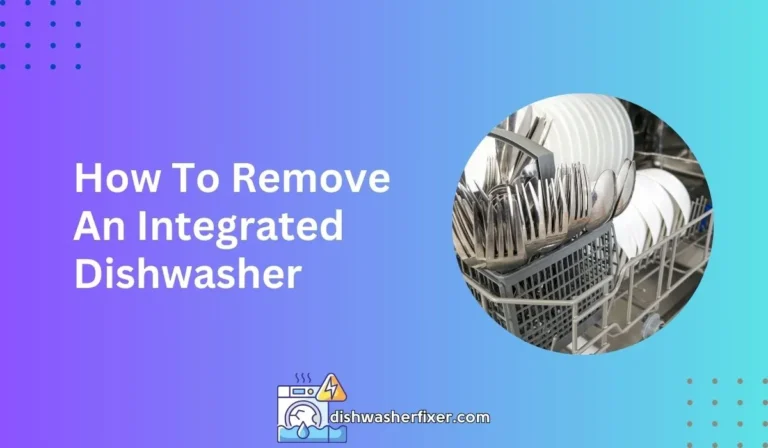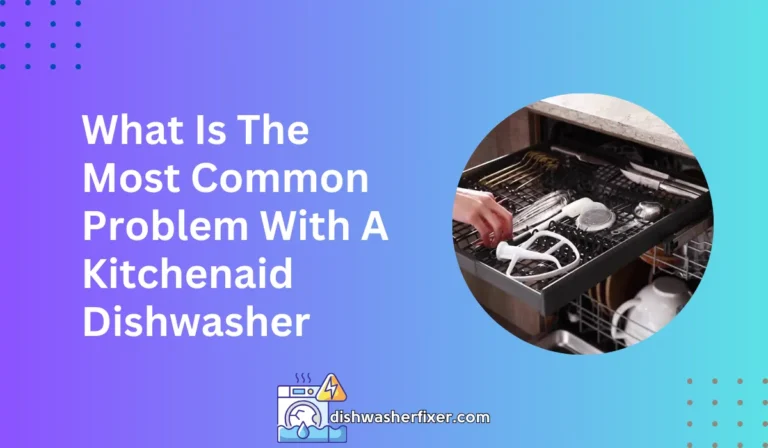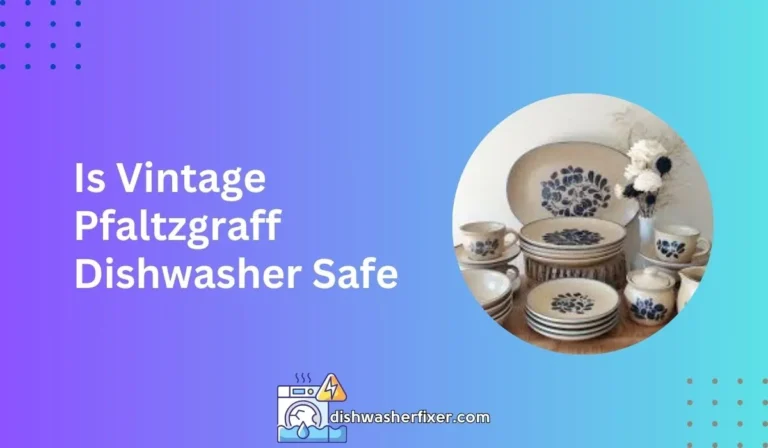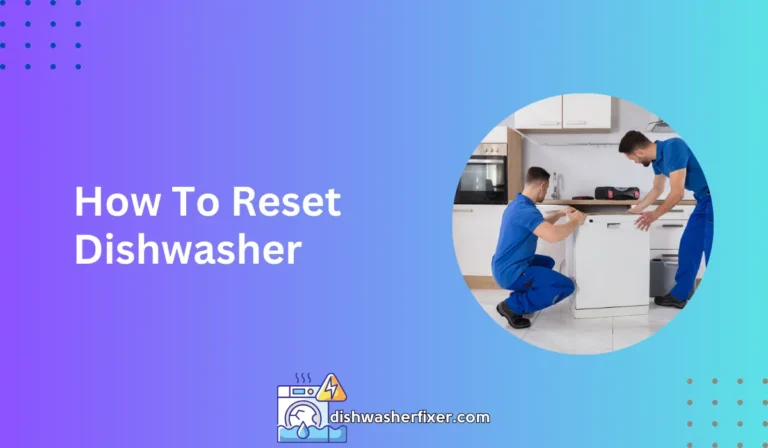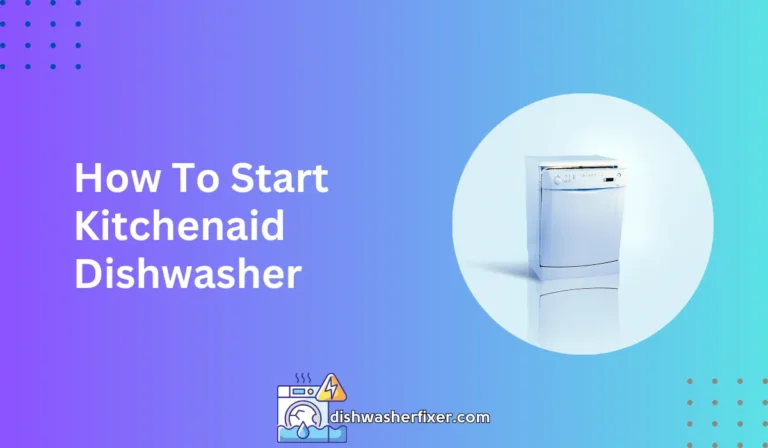How to Fix a Clogged Dishwasher: Quick & Easy Solutions
To fix a clogged dishwasher, first clear the drain of food scraps and debris. Check the filter for blockages and clean it thoroughly. Ensure the drain hose isn’t kinked or obstructed. Run a dishwasher cleaner through a cycle to remove any remaining clogs.
Signs of a Clogged Dishwasher

Water Not Draining Properly
One of the most obvious signs that your dishwasher is clogged is when water does not drain properly.
After a cycle, if you notice standing water at the bottom, this indicates that the water is not flowing through the drainage system as it should.
This can be caused by food particles, grease, or other debris blocking the path.
Presence of Water at the Bottom After a Wash Cycle
If you consistently find water pooled at the bottom of your dishwasher after a wash cycle, it’s a clear sign that the dishwasher is not draining correctly.
This could lead to water stagnation and, eventually, a breeding ground for bacteria and mold.
Dishes Not Being Cleaned Effectively
When a dishwasher is clogged, it affects its ability to clean dishes properly. You might notice food residue or a film on your dishes after they’ve been through a wash cycle.
This is often because the water cannot circulate freely and carry away the debris.
Unpleasant Odors Emanating from the Dishwasher
Foul smells coming from your dishwasher are a telltale sign of a clog. As food and other waste accumulate, they can start to decay, leading to unpleasant odors.
These smells are a signal that it’s time to inspect and clean your dishwasher.
Unusual Noises During Operation
Strange noises such as gurgling or humming from your dishwasher could indicate that water is struggling to pass through a clog.
If you hear unusual sounds, it suggests that some components, like the pump or the drain, might be working harder than usual to combat the blockage.
Identifying the Source of the Clog
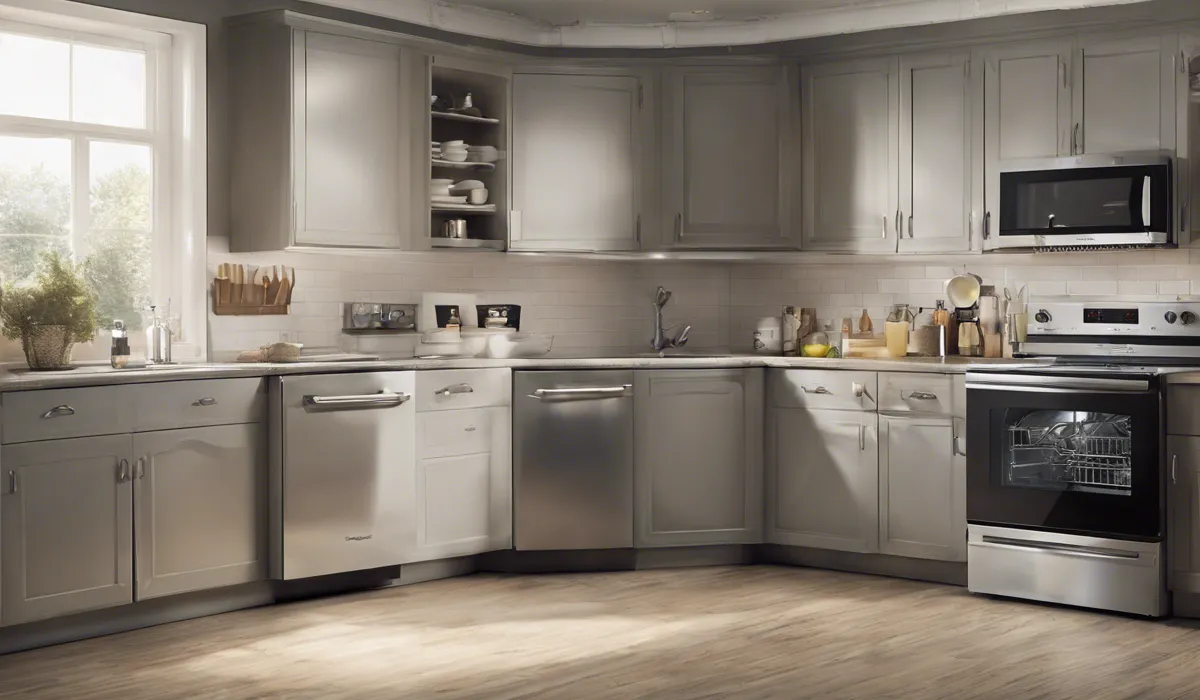
Checking the Dishwasher Filter
The filter is often the first place to check when you suspect a clog. It’s designed to catch food particles and prevent them from re-entering the wash cycle.
Over time, these particles can accumulate and block the filter, restricting water flow.
Inspecting the Drain Hose
The drain hose can become kinked or obstructed, which would impede the dishwasher’s ability to drain water. Inspecting the hose for bends, kinks, or clogs is crucial for maintaining a fully functional dishwasher.
Examining the Garbage Disposal Connection
For dishwashers connected to a garbage disposal, a clog can occur if the disposal is full or not running properly. It’s important to ensure that the garbage disposal is clear as it shares a common drain path with the dishwasher.
Looking for Clogs in the Spray Arm
The spray arm has tiny holes that can become clogged with debris, leading to poor water distribution during a wash cycle. Checking and cleaning the spray arm is essential to keep the dishwasher operating effectively.
Assessing the Dishwasher Drain Pump
The drain pump is responsible for expelling water from the dishwasher. If it’s clogged or malfunctioning, it can cause water to back up and lead to further issues within the dishwasher.
Step-by-Step Solutions to Fix the Clog

Cleaning the Dishwasher Filter
Start by removing and thoroughly cleaning the dishwasher filter. Soak it in warm, soapy water, and gently scrub to remove any debris. Make sure it’s completely clean before reinserting it into the dishwasher.
Clearing Blockages in the Drain Hose
If you’ve identified a clog in the drain hose, carefully disconnect it and flush it out with water.
You may use a plumber’s snake or a coat hanger to dislodge any blockages. Ensure the hose is clear before reattaching it to the dishwasher and the drain.
Running the Garbage Disposal
Make sure your garbage disposal is running properly and is clear of food scrapes. Running it can help clear the shared drain path and allow water from the dishwasher to drain correctly.
Unclogging and Cleaning the Spray Arm
Dismantle the spray arm according to the manufacturer’s instructions and use a toothpick or a small wire to remove any debris from the holes. Rinse the spray arm thoroughly before putting it back in place.
Checking and Cleaning the Drain Pump
If accessible, inspect the drain pump for obstructions. Be cautious as this step may require some technical knowledge.
Consult the dishwasher manual and, if needed, hire a professional to ensure no damage is done to the pump or the dishwasher.
Tips for Preventing Future Clogs
To avoid future clogs, scrape off large food particles before loading dishes, run hot water through your garbage disposal regularly, and clean the dishwasher filter monthly.
Also, consider using a dishwasher cleaner every few months to maintain clear pipes and hoses.
FAQs About Fixing a Clogged Dishwasher
What is the first step to take when fixing a clogged dishwasher?
The first step is to clear the dishwasher drain of any food scraps or debris that may be causing the clog.
How do I check for blockages in my dishwasher’s filter?
Remove the filter from the dishwasher and inspect it for any blockages. Clean it thoroughly to ensure it’s free from debris.
What should I do if the dishwasher’s drain hose is kinked?
Straighten out the drain hose to remove any kinks, and check that it isn’t obstructed to allow for proper drainage.
Can running a dishwasher cleaner help with clogs?
Yes, running a dishwasher cleaner through a cycle can help to remove any remaining clogs and clean the interior of the dishwasher.
What should I do if my dishwasher is still clogged after following these steps?
If the dishwasher is still clogged after following these steps, you may need to consult a professional to diagnose and fix any underlying issues.
Final Thoughts
Addressing a clogged dishwasher involves clearing the drain, checking and cleaning the filter, and ensuring the drain hose is free of kinks and obstructions.
Running a cycle with dishwasher cleaner can help eliminate any residual blockages, ensuring your appliance operates smoothly.
